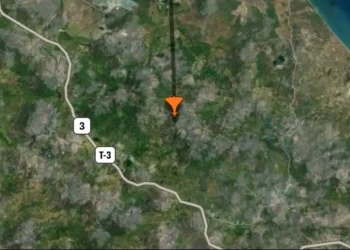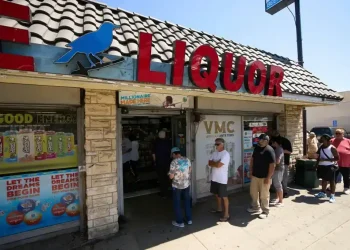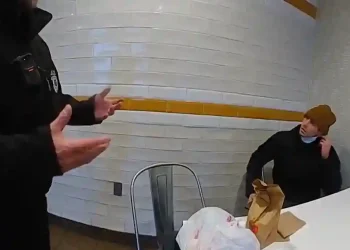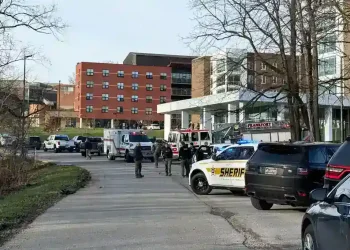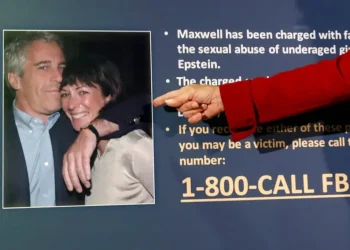Ted Kennedy’s Chappaquiddick crash: The scandal that changed American politics
July 25, 2025 – 9:25 AM
On the night of July 18, 1969, a car driven by Senator Edward “Ted” Kennedy veered off a bridge on Chappaquiddick Island, Massachusetts, killing 28-year-old Mary Jo Kopechne. The accident, and Kennedy’s delayed response in reporting it, sparked a national controversy that would damage his reputation, end his presidential aspirations, and leave lingering questions for decades.
More than half a century later, the Chappaquiddick incident remains one of the most notorious political scandals in American history—an unresolved tragedy that stained the legacy of the Kennedy dynasty.
A summer night that changed everything
Ted Kennedy, the youngest brother of former President John F. Kennedy and Senator Robert F. Kennedy, had long been viewed as the Democratic Party’s future. By 1969, he was Senate majority whip and widely expected to run for president. But on July 18, he attended a private gathering on Chappaquiddick Island with friends and former aides of his late brother Robert, including six women known as the “Boiler Room Girls.”
Among them was Mary Jo Kopechne, a respected political strategist who had worked closely with Robert Kennedy’s campaign. That night, Kennedy left the party with Kopechne, reportedly offering to drive her to the ferry so she could return to her hotel in Edgartown.
The fatal crash on Dyke Bridge
Kennedy later claimed he took a wrong turn down an unlit road and accidentally drove his black Oldsmobile off Dyke Bridge, a narrow wooden structure without guardrails. The vehicle landed upside down in Poucha Pond and began filling with water.
Kennedy escaped the car and swam to shore, but Kopechne remained trapped inside. According to Kennedy, he made several attempts to rescue her before walking back to the cottage where the party had taken place. Along the way, he passed several houses where he could have asked for help but did not.
Once at the cottage, he informed his cousin Joseph Gargan and former U.S. attorney Paul Markham of the accident. The two men accompanied him back to the scene and attempted to rescue Kopechne themselves but were unsuccessful due to the tide.
A troubling delay and unanswered questions
Rather than calling the police, Kennedy swam across the channel back to Edgartown—about 500 feet—and returned to his hotel. He did not report the accident until nearly 10 hours later, after the submerged car and Kopechne’s body had already been discovered by local authorities.
At the time, Edgartown Police Chief Jim Arena initially believed the body belonged to Rosemary Keough, another woman from the party, based on a recovered purse. He was surprised to find Kennedy already waiting in his office when he returned.
“He appeared clear-eyed, normal,” Arena recalled in a 2014 BBC interview. “He didn’t appear to be under the influence of anything.”
National reaction and legal consequences
The incident occurred just days before the historic Apollo 11 moon landing, and early press coverage was limited. But after Kennedy attended Kopechne’s funeral with his wife Joan—wearing a neck brace—public interest surged.
On July 25, 1969, Senator Kennedy pleaded guilty to leaving the scene of an accident causing personal injury. He received a two-month suspended sentence and had his driver’s license revoked for a year. That evening, he delivered a televised address, acknowledging his failure to report the crash and denying any improper conduct with Kopechne.
“I was overcome by a jumble of emotions: grief, fear, doubt, exhaustion, panic, confusion and shock,” he said. “There is no truth whatever to the widely circulated suspicions of immoral conduct.”
Speculation, inquest, and long-term impact
Despite Kennedy’s public explanation, inconsistencies and suspicions persisted. Some reports suggested he had made long-distance calls before contacting the police. Others alleged that he had asked his cousin to take the blame, or that he never swam back to Edgartown at all but was ferried instead.
Testimony during the inquest revealed further contradictions. A deputy sheriff claimed to have seen Kennedy and Kopechne in the car more than an hour after the time of the alleged crash. The diver who recovered Kopechne’s body believed she may have survived for up to 30 minutes in an air pocket inside the vehicle—raising questions about whether a prompt rescue could have saved her.
Nevertheless, no formal charges beyond leaving the scene were filed. The grand jury returned no indictment, and the case was closed.
A career changed forever
Though Kennedy remained a powerful figure in the Senate—ultimately becoming known as the “lion of the Senate” for his legislative accomplishments—the Chappaquiddick incident marked the end of any serious presidential ambitions.
He lost his leadership role as Senate majority whip in 1971 and never regained the national momentum his older brothers had achieved. The Democratic Party eventually nominated other candidates in 1972 and 1976, and even during his challenge to President Jimmy Carter in 1980, Chappaquiddick remained a political liability.
Personal and political fallout
The tragedy had lasting effects on all involved. Mary Jo Kopechne’s parents, devastated by the loss of their only daughter, never received full closure. Joan Kennedy, the senator’s wife, suffered a miscarriage shortly after the funeral.
In the decades that followed, books, films, and documentaries revisited the night on Chappaquiddick. The 2017 film Chappaquiddick reignited public interest and debate about the events of July 1969, highlighting the cultural and political impact of the scandal.
A lasting legacy clouded by controversy
Ted Kennedy served in the U.S. Senate until his death in 2009, where he played a major role in shaping healthcare, education, and civil rights legislation. Yet the Chappaquiddick incident remained an inescapable chapter in his story—one that reshaped American politics and undermined public trust in political elites.
“Nobody will ever know,” Chief Jim Arena said years later. “Because there were only two witnesses to the whole thing. One was dead, and the other one is deceased now.”
This article was rewritten by JournosNews.com based on verified reporting from trusted sources. The content has been independently reviewed, fact-checked, and edited for accuracy, neutrality, tone, and global readability in accordance with Google News and AdSense standards.
All opinions, quotes, or statements from contributors, experts, or sourced organizations do not necessarily reflect the views of JournosNews.com. JournosNews.com maintains full editorial independence from any external funders, sponsors, or organizations.
Stay informed with JournosNews.com — your trusted source for verified global reporting and in-depth analysis. Follow us on Google News, BlueSky, and X for real-time updates.



